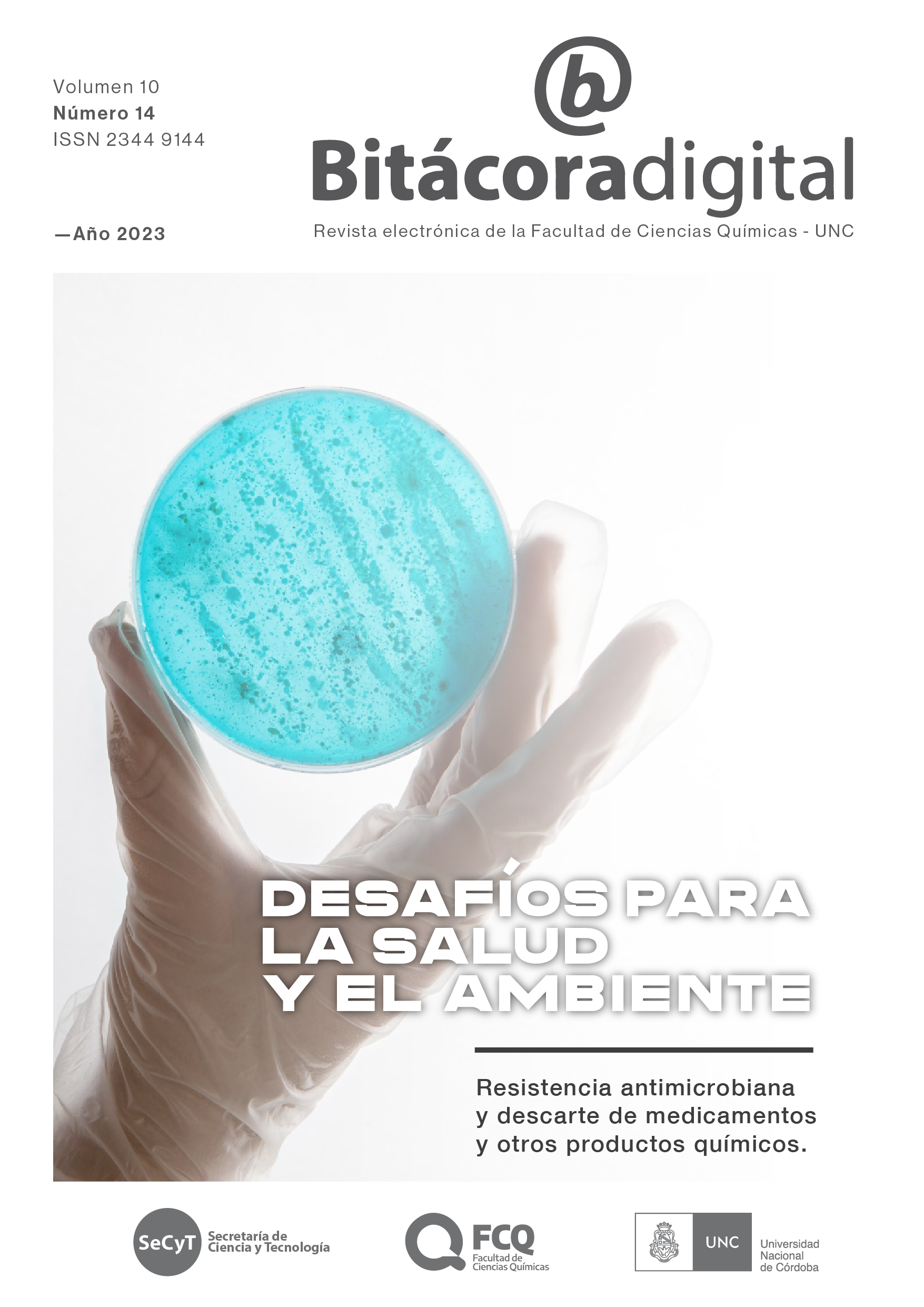Análisis de compuestos carbonílicos en Córdoba :
impacto en la calidad del aire
Keywords:
Carbonyls compound, Córdoba, urban air, passive monitoringAbstract
Carbonyl compounds could be emitted into urban air from biogenic sources such as plants, and from anthropogenic sources related to human activity. The presence of carbonyl compounds in urban air has a negative impact on the health of humans and biota.
In addition, the majority of these compounds are precursors of secondary atmospheric pollutants such as tropospheric ozone, the main component of photochemical smog. In the present work, 11 carbonyls were measured in the microcenter of the city of Córdoba, during the period from April to December 2021. Carbonyl compounds were measured using passive commercial Radiello® samplers, which were exposed for one week and posteriorly analyzed using HPLC-PDA. Annual average concentrations between 11.75-29.59 μg/m³ were obtained for all the carbonyls measured. Formaldehyde and acetaldehyde were the most abundant, representing approximately 40-57% of the total carbonyls measured, with mean annual concentrations of 4.44 ± 1.75 μg/m³ and 3.85 ± 1.44 μg/m³, respectively. The measured concentration values were statistically correlated with meteorological variables, suggesting that for some carbonyls there is a possible influence of these variables on the concentration. The study of possible emission sources showed that the main sources of the measured carbonyls are anthropogenic sources, related to vehicular traffic. In addition, it was found that during the spring and summer seasons the concentration of carbonyls increases, and
this could result in an increase in the production of tropospheric ozone.
Downloads
References
Y.-K. Seo, S.-O. Baek, Characterization of Carbonyl Compounds in the Ambient Air of an Industrial City in Korea, Sensors. 11
(2011) 949–963. https://doi.org/10.3390/s110100949.
E. V. Fischer, D.J. Jacob, R.M. Yantosca, M.P. Sulprizio, D.B. Millet, J. Mao, F. Paulot, H.B. Singh, A. Roiger, L. Ries, R.W. Talbot, K.
Dzepina, S. Pandey Deolal, Atmospheric peroxyacetyl nitrate (PAN): A global budget and source attribution, Atmos Chem Phys. 14
(2014) 2679–2698. https://doi.org/10.5194/acp-14-2679-2014.
B.F.E. Blacet, J.G. Calvert, of the The Photolysis of the Alphatic Aldehydes . concerning the primary processes proposed by, 272
(1951). https://doi.org/10.1021/ja01146a048.
J. Calvert, A. Mellouki, J. Orlando, Mechanisms of Atmospheric Oxidation of the Oxygenates, 2011th ed., New York, 2011.
V.L. Dellarco, A mutagenicity assessment of acetaldehyde, Mutation Research/Reviews in Genetic Toxicology. 195 (1988)
–20. https://doi.org/10.1016/0165-1110(88)90013-9.
G.D. Nielsen, S.T. Larsen, P. Wolkoff, Re-evaluation of the WHO (2010) formaldehyde indoor air quality guideline for cancer risk
assessment, Arch Toxicol. 91 (2017) 35–61. https://doi.org/10.1007/s00204-016-1733-8.
F. Sandner, W. Dott, J. Hollender, Sensitive indoor air monitoring of formaldehyde and other carbonyl compounds using the 2
, 4-dinitrophenylhydrazine method, 279 (2001) 275–279.
F.O. Santana, V.P. Campos, I.F. Santos, L.P.S. Cruz, A.V.S. Brito, Seasonal quimiometric study of formaldehyde and acetaldehyde
atmospheric levels and health risk assessment, in urban areas of Salvador-Bahia, Brazil, Microchemical Journal. 147 (2019) 524–
Downloads
Published
Issue
Section
License

This work is licensed under a Creative Commons Attribution-NonCommercial-ShareAlike 4.0 International License.
Licencia Creative Commons BY NC
Usted es libre de:
- Compartir — copiar y redistribuir el material en cualquier medio o formato
- Adaptar — remezclar, transformar y construir a partir del material
- La licenciante no puede revocar estas libertades en tanto usted siga los términos de la licencia
Bajo los siguientes términos:
-
Atribución — Usted debe dar crédito de manera adecuada, brindar un enlace a la licencia, e indicar si se han realizado cambios. Puede hacerlo en cualquier forma razonable, pero no de forma tal que sugiera que usted o su uso tienen el apoyo de la licenciante.
-
NoComercial — Usted no puede hacer uso del material con propósitos comerciales.

